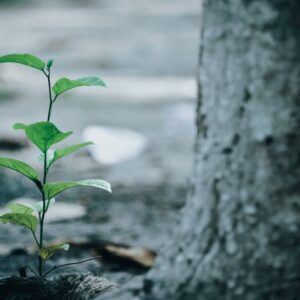Local non-profit civic organization
Earthworms – The Invisible Saviors of Soil: How Observing Them Helps Preserve the Ecosystem

Anyone who has ever dug in a garden or walked after the rain has likely noticed the slippery bodies of earthworms lazily surfacing. At first glance, they seem like ordinary invertebrates, unremarkable in every way. However, their significance to the soil and the entire ecosystem is difficult to overstate. These creatures, hidden from sight, play a crucial role in the cycle of organic matter, and observing their populations allows scientists to assess the health of the environment.
Earthworms live in the upper layers of soil, processing fallen leaves, dead roots, and other organic material. As these materials pass through their digestive systems, they are transformed into humus — a nutrient-rich substance that increases soil fertility. Moreover, the tunnels earthworms create during their movement improve soil aeration and help water reach plant roots. This is especially important in the face of climate change, as droughts and heavy rains become increasingly unpredictable.
In the Czech Republic, where a significant portion of land is used for agriculture, soil health is a matter of national importance. Scientists from the Czech Academy of Sciences note that earthworms are key indicators of agroecosystem conditions. In areas with intensive chemical use, their populations plummet, which directly affects soil quality. At the same time, restoring their numbers leads to a gradual improvement in soil structure, water retention, and resistance to erosion.
Science and Technology Against Degradation: How Studying Worms Aids Ecology
Observations of earthworms have long gone beyond school biology lessons. Modern methods include not only field studies but also laboratory analysis, genetic testing, and the use of geographic information systems. Scientists create so-called “worm maps,” which show regions where worm populations are high and where they are rapidly declining. This data is used in land-use planning, the selection of agricultural technologies, and land restoration programs.
For example, in Moravia, organic farming projects have been implemented in recent years, with one of the conditions being minimal soil disturbance and a rejection of pesticides. The results are impressive: within two to three years, the number of earthworms in these areas doubles, and the soil becomes noticeably softer and more fertile.
Educational and awareness programs are also actively developing in the Czech Republic. In ecological schools and interactive exhibitions, children are shown how soil functions, what organisms live in it, and why it is important to protect biodiversity. Interestingly, even among fans of online entertainment — including platforms like online casinos — there is growing interest in documentaries and ecology-themed games. This proves that sustainable development can also be a part of digital culture.
If you want to enjoy gameplay at reliable online casinos featuring the best games from renowned global developers, be sure to visit novecasino.net. There, you will find only verified platforms offering a huge variety of games and exciting opportunities for all fans of gambling entertainment. Each casino provides favorable conditions and bonus offers that make your gaming experience even more interesting and profitable.
The Death of Invisible Heroes: What Threatens Earthworms and What Can Be Done
Despite their clear benefits, earthworms are vulnerable. Major threats include mechanical soil treatment, heavy metal pollution, herbicide use, and drought. Agricultural machinery, especially during deep plowing, destroys entire populations of worms, breaks their tunnels, and disrupts the established ecosystem. Furthermore, soil acidity caused by industrial emissions also negatively affects their survival.
To prevent soil degradation, Czech farmers are increasingly turning to regenerative agriculture methods. This approach involves minimal interference, cover cropping, mulching, and other practices that support biodiversity restoration. One of the main challenges remains raising public awareness that even the smallest organisms can have a colossal impact on global sustainability.
A Small Step Toward a Big Future
Restoring earthworm populations is not an end in itself but one component of a broader strategy for nature conservation. As recent studies show, areas with high worm populations cope better with climate stress, recover faster after heavy rains, and maintain yields without the use of fertilizers.
Understanding the role of earthworms helps shift the perception of ecosystems as a whole. We often strive for technological progress, digitalization, and virtual leisure formats, but we forget that the stability of our world begins with its foundation — the soil beneath our feet. If we overlook these “invisible saviors,” no digital technology will be able to compensate for the loss of biological balance.
So the next time you see a worm after the rain, don’t look away too quickly. You might be seeing one of those who work every day to ensure that our planet remains livable.



